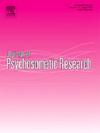Early maladaptive schemas in functional movement disorders: A cross-sectional study
IF 3.3
2区 医学
Q2 PSYCHIATRY
引用次数: 0
Abstract
Background
Early maladaptive schemas (EMS) are predisposing psychological factors for various disorders but raised little concern in Functional Movement Disorders (FMD). We aimed to assess the intensity of EMS in patients with FMD compared to Parkinson's Disease (PD) or Organic Dystonia (OD). We analysed their association with the severity of motor symptoms, anxiety, depression, dissociative symptoms and childhood trauma events.
Methods
We sent the Young Schema Questionnaire Short Form 3 (YSQ-S3, French version) by mail to patients who had participated in a previous study. Eighteen schemas from the YSQ-S3 were compared between the 3 groups using linear and linear mixed models. Their associations were analysed with the scores of the modified Abnormal Involuntary Movement Scale (AIMS), the Hospital Anxiety and Depression Scale (HADS), the Composite International Diagnostic Interview questionnaire (CIDI) and the Somatoform Dissociation Questionnaire (SDQ-20).
Results
32 patients with FMD, 28 patients with PD, 20 patients with OD filled the questionnaire. The Excessive Responsibility and High Standards schema domain score was significantly higher in the FMD group (MDE ± SE: FMD vs PD: 13.00 ± 3.52, p = 0.005; FMD vs OD: 17.34 ± 3.90, p < 0.001). The Self-Sacrifice schema scores were significantly more intense in the FMD group (group*schema: p < 0.001 and Cohen's f2 = 0.07; MDE ± SE: patients vs PD: 6.59 ± 1.30, p < 0.001; FMD vs OD: 9.57 ± 1.43, p < 0.001). No association was found between YSQ-S3 scores and age, gender, educational level, AIMS, HADS, CIDI, and SDQ-20.
Conclusions
Higher intensity of self-sacrifice schema scores was reported in patients with FMD, suggesting that it may be a significant predisposing and/or perpetuating factor in FMD.
功能性运动障碍的早期适应不良图式:一项横断面研究
背景:适应性不良图式(EMS)是多种疾病的易感心理因素,但在功能性运动障碍(FMD)中很少引起关注。我们的目的是评估FMD患者与帕金森病(PD)或器质性肌张力障碍(OD)患者的EMS强度。我们分析了它们与运动症状、焦虑、抑郁、分离症状和童年创伤事件严重程度的关系。方法邮寄青年图式问卷简表3 (YSQ-S3,法文本)给曾参加过研究的患者。采用线性和线性混合模型比较三组间YSQ-S3的18种图式。采用改进的不自主异常运动量表(AIMS)、医院焦虑抑郁量表(HADS)、综合国际诊断访谈问卷(CIDI)和躯体形式分离问卷(SDQ-20)的评分分析其相关性。结果FMD患者32例,PD患者28例,OD患者20例。FMD组过度责任和高标准图式域得分显著高于PD组(MDE±SE: FMD vs PD: 13.00±3.52,p = 0.005;FMD vs OD: 17.34±3.90,p <;0.001)。FMD组自我牺牲图式得分显著高于FMD组(组*图式:p <;0.001, Cohen’s f2 = 0.07;MDE±SE:患者vs PD: 6.59±1.30,p <;0.001;FMD vs OD: 9.57±1.43,p <;0.001)。YSQ-S3评分与年龄、性别、受教育程度、AIMS、HADS、CIDI、SDQ-20均无相关性。结论口蹄疫患者自我牺牲图式得分较高,提示其可能是口蹄疫的重要易感因素和/或持续因素。
本文章由计算机程序翻译,如有差异,请以英文原文为准。
求助全文
约1分钟内获得全文
求助全文
来源期刊
CiteScore
7.40
自引率
6.40%
发文量
314
审稿时长
6.2 weeks
期刊介绍:
The Journal of Psychosomatic Research is a multidisciplinary research journal covering all aspects of the relationships between psychology and medicine. The scope is broad and ranges from basic human biological and psychological research to evaluations of treatment and services. Papers will normally be concerned with illness or patients rather than studies of healthy populations. Studies concerning special populations, such as the elderly and children and adolescents, are welcome. In addition to peer-reviewed original papers, the journal publishes editorials, reviews, and other papers related to the journal''s aims.

 求助内容:
求助内容: 应助结果提醒方式:
应助结果提醒方式:


